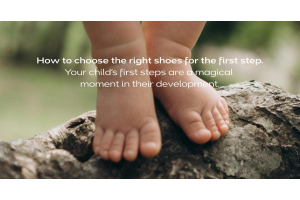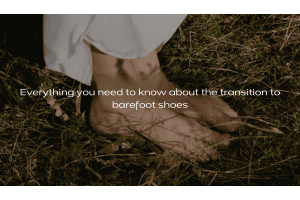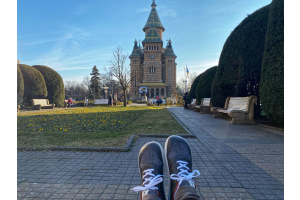The Benefits of Barefoot Shoes
Our feet are incredibly complex and have evolved over millions of years to function perfectly without artificial support. However, most of us wear footwear that modifies the natural biomechanics of walking and can cause various health problems. In this article, you'll discover the remarkable benefits of barefoot shoes and how they can transform your foot health, posture, and overall wellbeing.
What are Barefoot Shoes?
Barefoot shoes, also known as minimalist footwear, are designed to mimic the sensation of walking barefoot while maintaining basic protection against rough surfaces and weather conditions. These shoes have several distinctive features:
- Thin and flexible sole - usually between 3 and 10 millimeters thick, allowing the foot to feel the ground and move naturally
- Foot space and anatomical shape - respects the natural shape of the foot, providing enough room for toes to spread completely
- Zero drop - no height difference between heel and toes, keeping the foot in a natural and neutral position
- Extremely lightweight - you barely feel them on your feet, contributing to the barefoot walking sensation
Unlike conventional shoes that have arch support and excessive cushioning, barefoot shoes allow the foot to move naturally and feel the terrain.
Benefits of Barefoot Shoes
Transitioning to barefoot shoes may seem unusual at first, but the health benefits are supported by growing scientific research and positive experiences from thousands of users worldwide.
1. Improves Posture
Traditional shoes with high heels force the body into an unnatural position, pushing the hips forward and creating excessive curvature of the spine. Barefoot shoes return the body to its natural alignment, distributing weight evenly across the entire foot surface.
When you wear barefoot shoes, your center of gravity returns to its optimal position, reducing pressure on knees and hips. Research shows this can significantly reduce chronic back pain. Many users notice visible improvements in posture after just a few weeks. The spine aligns naturally, shoulders relax, and muscle tension in the neck and back decreases considerably.
2. Strengthens Foot Muscles, Tendons, and Ligaments
Conventional shoes take over much of the work your feet should be doing. As a result, over 20 intrinsic foot muscles become weak and atrophied. Barefoot shoes activate all these muscles with every step, transforming daily walking into a complete foot workout.
Studies demonstrate that regular barefoot shoe use increases foot muscle strength by up to 60% in the first six months. Tendons and ligaments become more elastic and resilient. This natural strengthening creates a solid foundation for the entire body and can prevent common problems like plantar fasciitis or Achilles tendinitis.
3. Increases Balance and Stability
The thin sole of barefoot shoes allows the foot to feel and react instantly to terrain changes. This direct connection with the ground activates sensory receptors in the sole, which transmit essential information to the brain about body position in space.
Elderly people who switch to barefoot shoes report a significant reduction in fall risk. Athletes observe improvements in performance and agility. The vestibular system works more efficiently when receiving constant feedback from the feet, leading to superior coordination and faster reactions.
4. Improves Proprioception
Proprioception represents the body's ability to perceive position and movement in space without relying on vision. Barefoot shoes amplify this ability through constant stimulation of nerve endings in the soles.
With each step, the brain receives detailed information about texture, temperature, incline, and pressure. This sensory enrichment develops deep body awareness that translates into more precise and graceful movements.
5. Prevents Foot Deformation
Narrow and rigid shoes force toes into an unnatural position, leading to progressive deformities like bunions, hammer toes, or overlapping toes. Barefoot shoes, with their anatomical shape, allow toes to move naturally and actively participate in walking.
For those already suffering from such problems, switching to barefoot shoes can stop progression and, in many cases, partially reverse existing deformities.
6. Reduces Injury Risk
It may seem surprising, but excessive cushioning in modern shoes actually increases injury risk. When the foot can't feel real impact, the brain can't properly adjust step force, leading to repeated shocks on joints.
Barefoot shoes promote a gentler gait, landing on the forefoot or midfoot instead of the heel. This natural technique reduces impact forces by up to 30% and distributes stress more evenly.
7. Increases Arch and Toe Flexibility
The foot arch functions as a natural spring that stores and releases energy with each step. Artificial support in traditional shoes weakens this mechanism, making the arch rigid and non-functional.
Barefoot shoes allow the arch to flex and extend naturally, maintaining its elasticity. Toes regain lost mobility, able to move independently and actively contribute to propulsion.
8. Improves Blood Circulation in Feet
Tight and rigid shoes restrict blood flow, causing cold, swollen, or numb feet. Barefoot shoes allow natural foot expansion with each step, acting as a pump that pushes blood back to the heart.
Free toe movement and complete sole flexion stimulate peripheral circulation. People with circulatory problems often find significant relief. Foot temperature regulates better, reducing excessive sweating in summer and cold sensations in winter.
9. Allows Natural Walking
Evolution has given us a perfect walking pattern that maximizes efficiency and minimizes body stress. Modern shoes fundamentally alter this natural biomechanics.
With barefoot shoes, the body instinctively returns to the walking technique it was designed for. Steps become shorter and quicker, with increased cadence. The center of gravity remains above the supporting foot, eliminating the braking that occurs when the heel strikes the ground ahead of the body. This efficiency translates to less fatigue and more energy throughout the day.
10. Connects You with the Environment
In a world increasingly disconnected from nature, barefoot shoes offer a simple path to reconnect with the earth. The sensation of soft grass, warm sand, or smooth stones under your feet awakens dormant senses and brings a new dimension to daily walks.
This tactile connection with the environment has profound effects on psychological wellbeing. Studies on "grounding" suggest that contact with the earth can reduce inflammation, improve sleep, and decrease stress. Each walk becomes a rich sensory experience that nourishes both body and mind.
How to Transition to Barefoot Shoes?
Transitioning to barefoot shoes requires patience and a gradual approach to allow the body to adapt. Muscles, tendons, and ligaments need time to strengthen after years of atrophy in conventional shoes. To make this change safely and avoid discomfort, it's essential to follow the steps for transitioning to barefoot shoes that will guide you through this transformative process.
Why Choose Barefoot Shoes from Lang.S Barefoot?
The benefits of barefoot shoes are clear and scientifically supported, and choosing the right pair makes the difference between a transformative and disappointing experience. Lang.S Barefoot offers minimalist footwear for adults and children, made from natural and environmentally friendly materials. Each pair is created with attention to detail, respecting the fundamental principles of barefoot design and offering the durability needed for daily use. Investing in your foot health begins with choosing shoes that respect and support your body's natural functioning.
 EN
EN RO
RO 




